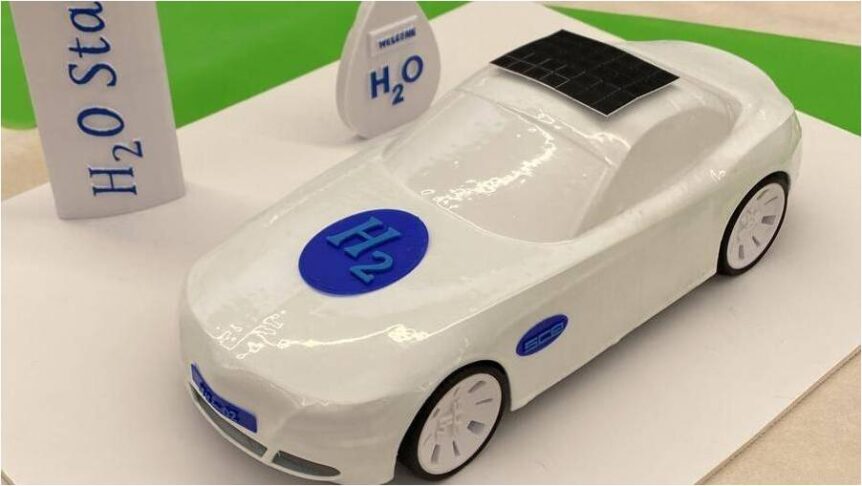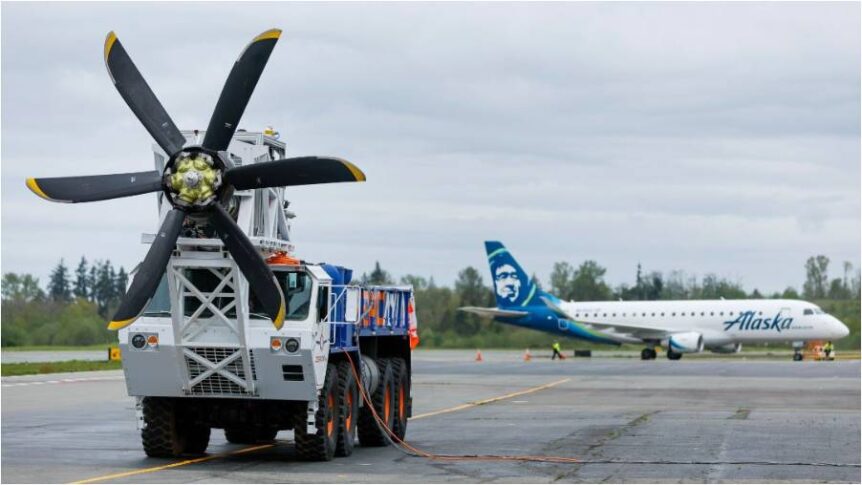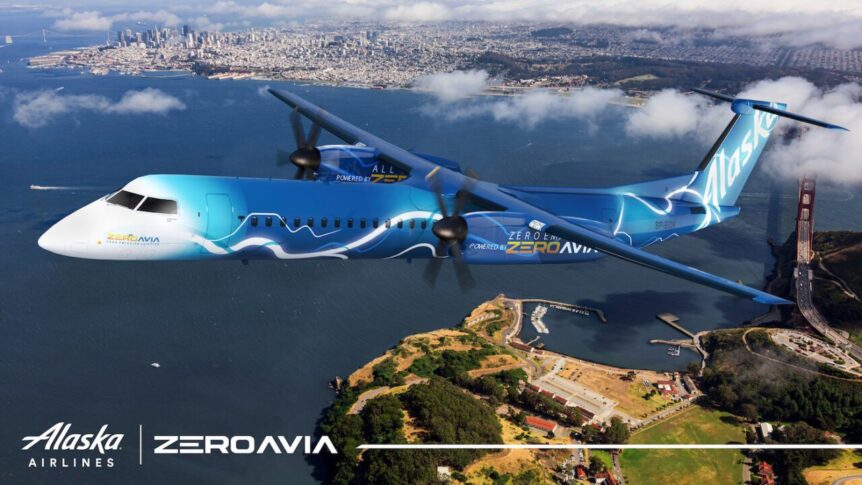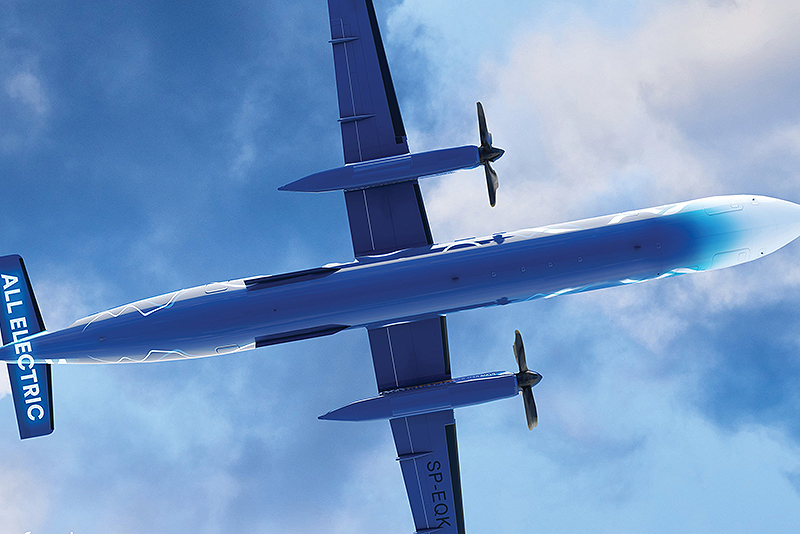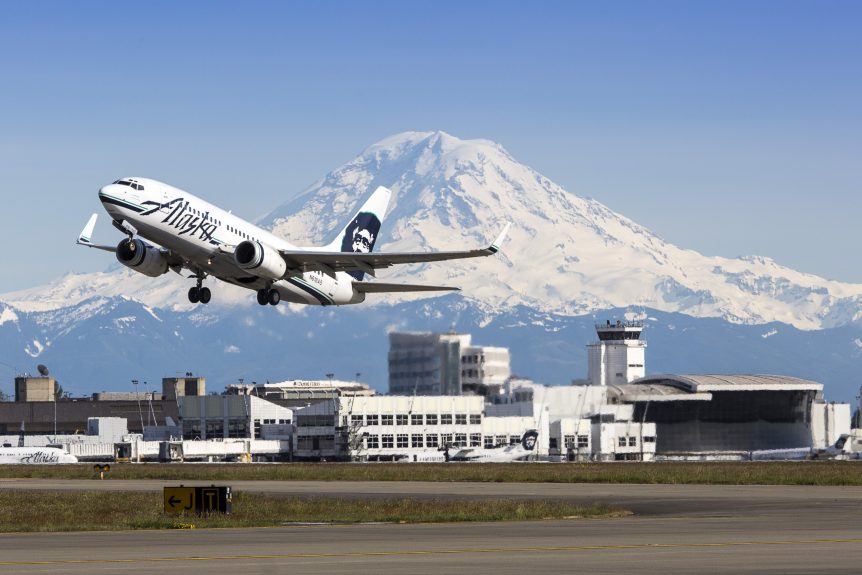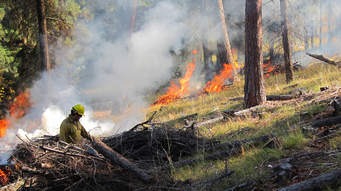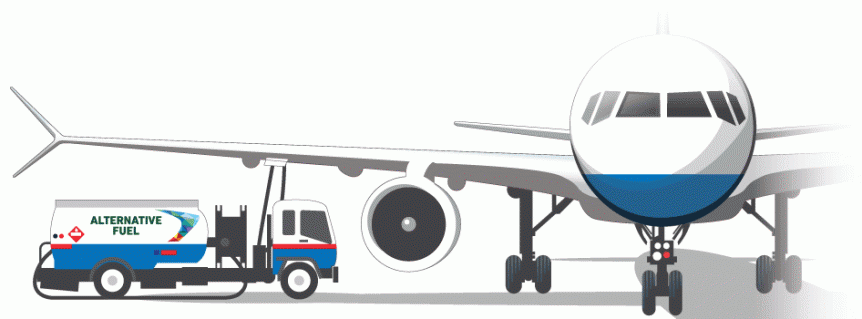Can we make green hydrogen (or other energy sources) from scrap we otherwise throw away? One of the frequently announced “breakthroughs” recurrently finding its way to our attention is that scrap food or farm waste has found its way to becoming aviation fuel, for instance. United and Alaska Airlines have flown aircraft powered by biofuels produced from food waste by suppliers at SEATAC airport in Seattle, Washington. Hydrogen is undergoing a growth spurt. The U. S. Department of Energy explains, “Hydrogen is an energy carrier that can be used to store, move, and deliver energy produced from other sources.” Green hydrogen seems to be an answer to many demands. It comes from splitting water, and if produced through clean means, is a carbon neutral to carbon negative product. Stainless Steel Powder and Water Dr. Guy Ben Hamu, Head of the Department of Mechanical Engineering at Sami Shamoon College of Engineering, explains the process uses H2 trapping, something usually related to …
ZeroAvia Has New Airplane, New Motor
ZeroAvia has taken delivery of a 76-seat Bombardier* Q400 airplane from Alaska Airlines. The craft could become a test bed for ZeroAvia’s modular HyperCore motors and hydrogen fuel systems. The Q400 will carry four times the number of passengers of the company’s current Dornier 228 twin-engine test aircraft – already having made five successful test flights. ZeroAvia proclaims, “The future of flight is renewable hydrogen,” and explains with a mission statement. “From 20 seat regional trips to over 100 seat long-distance flights, ZeroAvia enables scalable, sustainable aviation by replacing conventional engines with hydrogen-electric powertrains.” Two Dorniers, one in the United Kingdom and one in Hollister, California, are undergoing test flights (five so far in the Cotswolds in England) or awaiting FAA approval for such flights in Hollister. Acquiring the Bombardier brought a lot of attention to the Everett, Washington area recently, where ZeroAvia has a development center. Governor Jay Inslee came to inspect the project Q400 and prophecy about an increasingly …
ZeroAvia Finds Widespread Interest, Challenges
ZeroAvia is finding its way into the development of hydrogen-fueled aviation, and finding along its way great interest and challenges. ZeroAvia, now in Hollister, California, Cranfield, England, and Everett, Washington finds widespread interest in serving multiple clients, since its projects fit a wide dynamic range of exciting possibilities. The three locations enable adhering to different certification requirements while meeting diverse challenges. Val Miftakhov, founder and CEO of ZeroAvia, has grand plans for his company and the clients it will serve. Otto Celera 500L Lurking on the sidelines of the Victorville, California airport for what seemed years, this craft was a great mystery with unspecified potential. Now it’s flying with a 550 horsepower RED (Raikhlin Engine Development) V-12 Diesel powerplant and seems to fulfill the dictum that if it looks good, it will fly well. The bullet-shaped aircraft can fly for a mere $328 an hour, taking six passengers over 400 miles in that time. Otto compares this to the $2,100 …
ZeroAvia Comes to the Pacific Northwest
In the Everett (Washington) Herald Janice Podsada reports, “ZeroAvia, which currently has offices in London and in Hollister, California, plans to invest $5.5 million to ready an Everett site for a team of 20 design and software engineers.” This will be a new entry in Snohomish County, a location already supporting over 500 aerospace companies. Everett, site for Boeing Aircraft’s huge production facility, is also home to MagniX, poised to power aircraft such as Eviation’s Alice, currently preparing for test flights in Arlington, about 18 miles north. ZeroAvia will accept, “A $350,000 grant to convert a warehouse at the Snohomish County-owned airport into a research-and-development facility.” Val Miftakhov, ZeroAvia’s founder, explained the importance of the state’s Department of Commerce grant. “Given the age of the facility we will be occupying, this grant closed a gap related to facility construction and we are excited to engage in this community.” A hub of the Northwest’s center for aircraft development, Paine Field is also …
ZeroAvia, Mitsubishi, and Alaska Airlines Power Up
A Different Type of Kitplane Green Aeronautics are moving beyond small beginnings into grander realms through ZeroAvia, Mitsubishi, and Alaska Airlines. Gabriel DeVault has flown two different electric airplanes of his own, a converted EarthStar Thundergull and a Sonex eXenos (which seems to be his daily commuter between Hollister, California and his home in Watsonville). Both have been featured prominently in his YouTube channel and your editor has written about them for Kitplanes magazine. Now, Gabriel is working on a different type of Kitplane at a much large scale. Gabriel managed research and design for the motor and related systems on the Zero electric motorcycle. The original unit has gone through several upgrades, and is now seen in variants from 27 to 110 horsepower. The company sold over 4,000 units last year in 30 countries including the United States. They look to build at an accelerated rate, hoping to double sales every year. He has taken that expertise to larger …
Biofuels from Many Sources
We’ve looked at an array of different biofuel sources ranging from used cooking oil and algae to farm and municipal waste. This is essential as the percentage of airline emissions becomes a bigger part of our overall greenhouse gas situation. The Guardian reports, “A 2017 estimate said air travel accounted for 2.5% of all carbon dioxide emissions, with the total emissions expected to quadruple by 2050.”We’ll look here at how some of the early efforts have panned out and examine a late-breaking surprise or two. Mustard Seeds? According to the Guardian, “A Qantas plane powered partly by mustard seeds has become the world’s first biofuel flight between Australia and the United States, after landing in Melbourne on [January 30, 2018].” A major test, the 15-hour flight used a blended fuel 10-percent of which came from the brassica carinata, a mustard seed used as a fallow crop between regular crop cycles. Qantas’ Boeing Dreamliner 787-9 “Reduced carbon emissions by 7 percent …
Renewable Biomethane – an Economic Alternative?
Compressed natural gas (CNG) has several things going for it. It is cheaper than gasoline or diesel fuel, has lower emissions, and for a conventional piston-engined airplane, is the equivalent of over 130 octane, far more powerful than 100-octane low lead (100LL) and cleaner burning. CNG Fuels in England CNG filling stations are growing across the country as fleet owners take advantage of the economics of converting their vehicles, but are still few and far between in the west, with the exception of California. There are under 900 stations throughout America. Alluring as CNG might be for drivers, pilots used to paying $5.50 per gallon for avgas should be charmed by CNG’s price of $1.00 per gallon equivalent. That is with conventional, fossil-based CNG, basically a storable version of natural gas. That leads to its less-desirable characteristics. First, it pollutes, too, and is a source of greenhouse gases. Second, natural gas has a hard time overcoming its association with fracking, …
Gleaning the Forests for Jet Fuel
Three congresspeople flew on wood-waste fumes this week, aboard an Alaska Airlines Boeing 737-800 on its way from Seattle-Tacoma International Airport (SEATAC) to Washington, DC. It was the first commercial flight to “to be powered by a blend of renewable jet fuel made from forest residuals.” Waste Products Replace Fossil Fuels Alaska, Boeing, and SEATAC have partnered on including biofuels in the mix since early 2015, as reported here. Later that year, United made flights out of Los Angeles International (LAX) using a blend of fossil-based jet fuel and biofuels made from farm and municipal waste. Keeping waste out of landfills and producing a lower carbon-footprint fuel has several benefits. In the case of forest waste, those branches, limbs and twigs that litter the forest floor after a timber harvest, cleaning that debris away lowers fire risk in the warm seasons and makes renewable isobutanol. Developed through a five-year project led by Washington State University and the Northwest Advanced Renewables …
SeaTac, Boeing, Alaska Airlines Partner on Biofuel
Aviation accounts for about two-to-three percent of the total CO2 emitted through burning fossil fuels, according to the Intergovernmental Panel on Climate Change (IPCC). That’s even with military jets flashing their afterburners and trailing un-enhanced high-altitude contrails. Whether these emissions add to global warming or global cooling seems to be still open to debate. Regardless, almost everyone in the industry feels it is worth eliminating the negative aspects of aircraft emissions. Sea-Tac’s Big Plan Seattle-Tacoma International Airport, Alaska Airlines and Boeing are partnering to power all flights from Sea-Tac with “sustainable aviation biofuel.” The trio has crafted a long-term roadmap to devise an infrastructure “in a cost-effective, efficient manner.” There may be benefits to the local economy, as well as to operational costs for airlines. According to Biomass Magazine, “At the Sea-Tac fuel farm Dec. 16, executives for the port, Alaska Airlines, and Boeing signed a memorandum of understanding (MOU) to launch a $250,000 Biofuel Infrastructure Feasibility Study that will assess …
Farm and Municipal Waste to Bio Jet Fuel
United Airlines has united with two partners, AltAir Fuels and Fulcrum BioEnergy, to fly on sustainable alternative fuels. Think of each flight being cleaner, using what formerly were unusable, land-fill-bound waste products, and certain to make United more sustainable, and flights less costly. Earlier efforts at producing biofuels relied on converting food, such as corn, into fuel, an uneconomical process that raised food prices and often used more energy than it produced in ethanol, for instance. This was not sustainable and didn’t allow economic benefits for its users, so fell into disrepute quickly. Organizations like the United Nations spoke out against taking grains from the poorest among us to make fuels for jetsetters. In their 2009 report, UNEP, the United Nations Environment Program, calculated that up to 34 percent of arable land would be required to produce the fuel necessary to maintain current Powerful firms sometimes take farms from poor communities in third-world countries to produce biofuels, adding human misery …
- Page 1 of 2
- 1
- 2

